|
Books Should Be Free Loyal Books Free Public Domain Audiobooks & eBook Downloads |
|
|
Books Should Be Free Loyal Books Free Public Domain Audiobooks & eBook Downloads |
|
History Books |
|---|
|
Book type:
Sort by:
View by:
|
By: Simon Dubnow (1860-1941) | |
|---|---|
 History of the Jews in Russia and Poland Volume III, From the Accession of Nicholas II until the Present Day
History of the Jews in Russia and Poland Volume III, From the Accession of Nicholas II until the Present Day
Simon Dubnow was born in 1860 to a poor Jewish family in Belarussian town of Mstsislaw and later became authority of Jewish history and an activist. Due to his Jewish origin, he had to move to St.Petersburg, Odessa, Vilna, St.Petersburg, Kaunas, Berlin and finally Riga. When Nazi troops occupied Latvia 1941, he was moved with thousands of other Jews to Riga ghetto and was eventually killed. His life is a symbol of Jewish suffering in Eastern Europe. In this book Jews have been migrating from Germany... | |
 History of the Jews in Russia and Poland, Volume 1 [of 3] From the Beginning until the Death of Alexander I (1825)
History of the Jews in Russia and Poland, Volume 1 [of 3] From the Beginning until the Death of Alexander I (1825)
Simon Dubnow was born in 1860 to a poor Jewish family in Belarussian town of Mstsislaw and later became authority of Jewish history and an activist. Due to his Jewish origin, he had to move to St.Petersburg, Odessa, Vilna, St.Petersburg, Kaunas, Berlin and finally Riga after Hitler came to power. When Nazi troops occupied Latvia 1941, he was moved with thousands of other Jews to Riga ghetto and was eventually killed. His life is a symbol of Jewish suffering in Eastern Europe in the first half of 20 century. This book is one of the most extensive and thorough study of the glory and suffering of the Jews in Russia and Poland for 2000 years. - Summary by S. S. Kim | |
By: Sinclair Lewis (1885-1951) | |
|---|---|
 Main Street
Main Street
A social satire, Main Street became a best-seller soon after its publication, fascinating readers with its biting humor and realistic portrayal of small-town communities. Published in 1920, the novel follows Carol Milford as she moves to a conventional small town, where she encounters its conceited residents characterized by their ignorance, hypocrisy, and smugness, while simultaneously being the target of their careless ridicule. Furthermore, the novel efficiently exemplifies the dividing line between the sophisticated urban setting and the conventionally governed small-town, as it tackles issues of embracing differences, social class, disillusionment, feminism, and community... | |
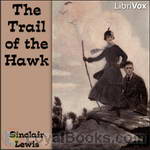 The Trail of the Hawk
The Trail of the Hawk
| |
By: Sir Arthur Conan Doyle (1859-1930) | |
|---|---|
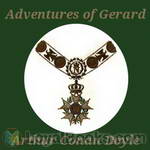 The Adventures of Gerard
The Adventures of Gerard
These lesser known stories were penned by Conan Doyle during the period between killing off Sherlock Holmes in 1893 and reluctantly resurrecting him some ten years later. The swashbuckling, eponymous hero, Etienne Gerard, is one of Napoleon's gallant French Hussars, who considers himself the finest of them all. Through these "Boys Own Adventures", Conan Doyle pokes gentle fun at both the French and the English. This is the second volume containing eight adventures. | |
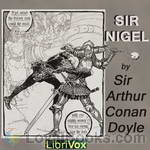 Sir Nigel
Sir Nigel
By 1348 the House of Loring has fallen on hard times. Together, the Black Death and the greedy monks of Waverley have bled away all of the Loring wealth. Even the manor house will have to go to pay their debts.Then a chance encounter with the King of England provides Nigel, the last of the Lorings, with the chance to seek his fortune in the constant wars with France. But more importantly for Nigel it also means that he may be able to do the "three small deeds" that will show he is worthy to ask for the hand of the Lady Mary in marriage.Filled with chivalry, humour, and high romance, Sir Nigel is simply a rattling good yarn. | |
 Visit to Three Fronts: June 1916
Visit to Three Fronts: June 1916
In the course of May 1916, the Italian authorities expressed a desire that some independent observer from Great Britain should visit their lines and report his impressions. It was at the time when our brave and capable allies had sustained a set-back in the Trentino owing to a sudden concentration of the Austrians, supported by very heavy artillery. I was asked to undertake this mission. In order to carry it out properly, I stipulated that I should be allowed to visit the British lines first, so that I might have some standard of comparison... | |
By: Sir Charles G. D. Roberts (1860-1943) | |
|---|---|
 Heart of the Ancient Wood
Heart of the Ancient Wood
A woman and her daughter take refuge in a cabin deep in the Canadian forest. This is a tale of survival from the land, friendship and love. - Summary by Czandra | |
By: Sir Edward Shepherd Creasy (1812-1878) | |
|---|---|
 Fifteen Decisive Battles of the World
Fifteen Decisive Battles of the World
This work is Edward Creasy's best known fundamental work of history. It describes in detail 15 battles of world history, beginning with the Battle of Marathon of 490 BC and ending with the Battle of Waterloo of 1815. Each chapter is illustrated with rich historical detail and a timeline of events. | |
By: Sir Frederick Maurice Powicke (1879-1963) | |
|---|---|
 Bismarck and the Origin of the German Empire
Bismarck and the Origin of the German Empire
Despite its brevity, this Little Blue Book #142 by the Oxford historian, Sir F.M. Powicke, provides a valuable overview of the political history of Germany from medieval to modern times, culminating in the career of Otto von Bismarck , the Prussian Junker who masterminded the unification of Germany and served as its first Chancellor. - Summary by Pamela Nagami, M.D. | |
By: Sir Grafton Elliot Smith (1871-1937) | |
|---|---|
 Tutankhamen: and the Discovery of His Tomb by the Late Earl of Carnarvon and Mr. Howard Carter
Tutankhamen: and the Discovery of His Tomb by the Late Earl of Carnarvon and Mr. Howard Carter
“Never before in the history of archaeological inquiry has any event excited such immediate and world-wide interest as Mr. Howard Carter's discovery of Tutankhamen's tomb in November 1922. It gives us a new revelation of the wealth and luxury of Egyptian civilization during its most magnificent period. In beauty and design and perfection of craftsmanship, Tutankhamen's funerary equipment is indeed a new revelation of the ancient Egyptians' artistic feeling and technical skill.” “At the time of Tutankhamen the great peoples that had built up civilization were losing their dominant position... | |
By: Sir Henry Morton Stanley (1841-1904) | |
|---|---|
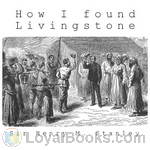 How I Found Livingstone
How I Found Livingstone
Sir Henry Morton Stanley is famously quoted for saying “Dr Livingstone, i Presume?”. Born in Wales, he migrated over to the United States at the age of 18, and eventually became an overseas correspondent for the New York Herald. In 1869 Stanley was told by James Gordon Bennett Jr to find Livingstone, a scottish missionary and explorer, who was lost in central Africa. When Stanley commented on the cost Bennett’s reply was: “Well, I will tell you what you will do. Draw a thousand pounds now; and when you have gone through that, draw another thousand, and when that is spent, draw another thousand, and when you have finished that, draw another thousand, and so on; but, FIND LIVINGSTONE. | |
By: Sir John Barrow (1764-1848) | |
|---|---|
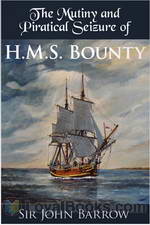 Eventful History of the Mutiny and Piratical Seizure of H.M.S. Bounty
Eventful History of the Mutiny and Piratical Seizure of H.M.S. Bounty
On December 31 1787, the HMS Bounty, a small sailing vessel embarked from Spithead Harbor, England bound for Tahiti. Her mission was sponsored by the Royal Society in London and aimed at picking up breadfruit plants and fruit from Tahiti and conveying them to the West Indies, where it was hoped they would take root and become a commercial crop. The Bounty was an old ship with a young captain and 46 young officers. The captain's cabin was converted into a potting shed for the expected breadfruit cargo... | |
By: Sir Joseph Pope (1854-1926) | |
|---|---|
 Chronicles of Canada Volume 29 - The Day of Sir John Macdonald: A Chronicle of the First Prime Minister of the Dominion
Chronicles of Canada Volume 29 - The Day of Sir John Macdonald: A Chronicle of the First Prime Minister of the Dominion
A biography of Sir John A. Macdonald, the first Prime Minister of Canada. It was written by the man who served as Macdonald's private secretary from 1882 to 1891. | |
By: Sir Walter Scott (1771-1832) | |
|---|---|
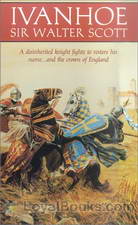 Ivanhoe
Ivanhoe
Medieval England in the 12th century. The evil Prince John rules England in place of his brother, the noble Richard the Lionheart, who is being held in an Austrian prison by Duke Leopold of Austria, while returning from one of his Crusades. Under the avaricious and Machiavellian John, the Norman aristocrats are in constant conflict with the native Saxon people. Ivanhoe by Sir Walter Scott is set in these turbulent times. The eponymous hero, Wilfred of Ivanhoe, the son of a Saxon nobleman has been disinherited by his father for following King Richard into war... | |
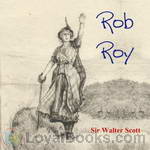 Rob Roy
Rob Roy
Rob Roy is a historical novel by Walter Scott. It is narrated by Frank Osbaldistone, the son of an English merchant who travels first to the North of England, and subsequently to the Scottish Highlands to collect a debt stolen from his father. On the way he encounters the larger-than-life title character of Rob Roy MacGregor. Though Rob Roy is not the lead character (in fact the narrative does not move to Scotland until half way through the book) his personality and actions are key to the development of the novel. | |
 Kenilworth
Kenilworth
An Elizabethan era historical novel by Scotland’s master of fiction, Sir Walter Scott. With a cast of historical and created characters, including the Queen herself, Scott presents the sad history and tragic consequences of the secretive marriage of young Amy Robsart and the Earl of Leicester. (Summary by SK) | |
 Fortunes of Nigel
Fortunes of Nigel
During the turbulent moment in English history involving King James 1 and 6, Nigel Olifaunt, a Scottish lord, seeks to protect his family home and holdings, but meets with recalcitrance and treachery, which eventually results in his imprisonment. But there are forces of good that help to set him free and right injustices. | |
By: Smedley Butler (1881-1940) | |
|---|---|
 War Is a Racket
War Is a Racket
Marine Maj. Gen. Smedley Butler's expose of American Corporate Imperialism. Butler said, “I served in all commissioned ranks from second lieutenant to Major General. And during that period I spent most of my time being a high-class muscle man for Big Business, for Wall Street, and for the bankers. In short, I was a racketeer for capitalism. I suspected I was just part of the racket all the time. Now I am sure of it.” - Summary by John Greenman and https://www.americanswhotellthetruth.org/portraits/major-general-smedley-butler | |
By: Songling Pu (1640-1715) | |
|---|---|
 Strange Stories From a Chinese Studio, volume 1
Strange Stories From a Chinese Studio, volume 1
"Strange Tales from a Chinese Studio" is a collection of nearly five hundred mostly supernatural tales written by Pu Songling during the early Qing Dynasty. It was written in Classical Chinese rather than Vernacular Chinese. Pu is believed to have completed the majority of the tales sometime in 1679, though he could have added entries as late as 1707. He borrows from a folk tradition of oral storytelling to put to paper a series of captivating, colorful stories, where the boundary between reality and the odd or fantastic is blurred... | |
 Strange Stories from a Chinese Studio, Volume 2
Strange Stories from a Chinese Studio, Volume 2
"Strange Tales from a Chinese Studio" or "Strange Tales of Liaozhai" is a collection of nearly five hundred mostly supernatural tales written by Pu Songling during the early Qing Dynasty. It was written in Classical Chinese rather than Vernacular Chinese. Pu is believed to have completed the majority of the tales sometime in 1679, though he could have added entries as late as 1707. He borrows from a folk tradition of oral storytelling to put to paper a series of captivating, colorful stories, where the boundary between reality and the odd or fantastic is blurred... | |
By: Soren Kierkegaard (1813-1855) | |
|---|---|
 Fear and Trembling (selections)
Fear and Trembling (selections)
"And God tempted Abraham and said unto him: take Isaac, thine only son, whom thou lovest and go to the land Moriah and sacrifice him there on a mountain which I shall show thee. Genesis 22:1" Soren Kierkegaard wondered how Abraham made the movement of faith that made him the father of faith mentioned in the New Testament . Fear and Trembling is the product of his wonder. Work out your salvation in fear and trembling . One-third of "Fear and Trembling" was translated in 1923 by Lee Hollander in the University of Texas Bulliten. This book has already been read in parts in the Short Nonfiction Collection but I think some might be interested in listening to it as a complete reading. | |
By: St. George Stock (b. 1850) | |
|---|---|
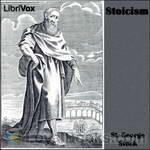 Stoicism
Stoicism
This short book is part of the Philosophies Ancient and Modern series, which attempts to make Western philosophy more accessible to the general public. In this volume, George Stock provides a concise primer on Stoicism, the ancient philosophy that maintained that the universe is governed entirely by fate, and that humans can achieve happiness only by cultivating a calm acceptance of the vicissitudes of life. Among the Stoics of the Greek and Roman world were its founder, Zeno, the former slave Epictetus, and the Roman emperor Marcus Aurelius... | |
By: Stamp Act Congress of 1765 | |
|---|---|
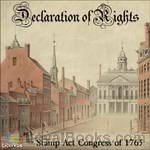 Declaration of Rights
Declaration of Rights
On June 8, 1765 James Otis, supported by the Massachusetts Assembly sent a letter to each colony calling for a general meeting of delegates. The meeting was to be held in New York City in October. Representatives from nine colonies met in New York. Though New Hampshire, Virginia, North Carolina and Georgia did not send delegates, the Assemblies of those missing colonies nonetheless agreed to support the works of the Congress. The meetings were held in Federal Hall in New York, and the delegates assembled on October 2... | |
By: Stanislav Dnistriansky (1870-1935) | |
|---|---|
 Ukraina and the Peace-conference
Ukraina and the Peace-conference
The 19th century was the Golden Age of Nationalism in Europe. By the end of the century many countries achieved their national self-determination. But the asunder of the territories was still a cause of dispute which led to the Great War in 1914. Ukrainian nationalism reached its peak in the early years of the 20th century. The Great War was the opportunity of the nation to obtain its unification and liberty from Russian Empire and Austria-Hungary which kept Ukraine under their reign for decades... | |
By: Stanley Lane-Poole (1854-1931) | |
|---|---|
 Story of the Barbary Corsairs
Story of the Barbary Corsairs
A history of the pirating activities along and around the "Barbary coast" between the 15th and 19th centuries, from the time of the pirate, Ujra Barbarossa, to the French control of Algeria in 1830. Although piracy had plagued all the world's waterways from the first time man decided to trade by boat or ship, authors Lane-Poole and Kelley tell mainly of the origins and "Golden Age" of the Moor pirates who rampaged the Mediterranean Sea from ports of call along the north coast of Africa. | |
 Story of Cairo
Story of Cairo
Although Cairo is most famous for the ancient Egyptian pyramids of Giza located at its outskirts, the city as we know it today dates back only to 969. Since then, numerous rulers of different Muslim dynasties built fortifications, mosques and other buildings that earned Cairo the name "city of a thousand minarets". In this book, Stanley Lane-Poole traces the history of Cairo from the early Muslim period to the British Invasion of 1882. While doing so, he gives vivid descriptions of many of the mediaeval buildings that shape Cairo's cityscape to this day. This book is part of the "Mediaeval Town" series published in the early 20th century. Proof listeners: SaraHale and MrsHand | |
By: Stephen Crane (1871-1900) | |
|---|---|
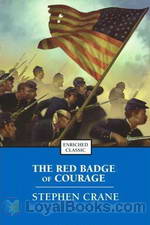 The Red Badge of Courage
The Red Badge of Courage
The Red Badge of Courage is a fiction that tells the story of a soldier named Henry Fleming during the American Civil War. The novel gained widespread praise from critics and was also a commercial success shortly after its release and made Stephen Crane an instant celebrity at the young age of 24. In the novel, Henry was one of the enlisted soldiers in the 304th New York Regiment. He flees from battle in one of the skirmishes they had against the Confederates and to hide his cowardice, he attempted to inflict a wound to himself which is referred to as the “red badge of courage... | |
By: Stephen D. Peet (1831-1914) | |
|---|---|
 Ashtabula Disaster
Ashtabula Disaster
Rev. Stephen D Peet describes the fatal railroad disaster on December 29, 1876 in Ashtabula, Ohio due to a bridge failure. He was a resident of the town and at the scene on the night of the disaster. This book is based upon his work at the crash site, interviews with survivors, information from the press and the coroner's jury, His intent is not to describe the disaster but rather to focus on "the religious lessons of the occasion" and to provide the reader with "comfort from a view of the lovely characters and the Christian hopes which span this dark cloud with a bow of promise". - Summary by mleigh | |
By: Stephen Leacock (1869-1944) | |
|---|---|
 Chronicles of Canada -- Dawn of Canadian History: Aboriginal Canada
Chronicles of Canada -- Dawn of Canadian History: Aboriginal Canada
Most readers of Stephen Leacock's works are familiar with his witty and humorous writings, but few may be aware that he was also a gifted teacher, political ideologue, economist and fiction writer. Though he wrote six books on Canadian history, none of them attained the status of a standard text on the subject and were regarded more as opinion pieces without much academic foundation. Yet, the Chronicles of Canada series by Stephen Leacock remains an interesting and entertaining read. In this volume, Dawn of Canadian History: Aboriginal Canada, which is part of a thirty-two book series of short and simple essays, Leacock explores the little known origins of Canada's past... | |
 The Unsolved Riddle of Social Justice
The Unsolved Riddle of Social Justice
This lengthy political essay by noted Canadian humourist Stephen Leacock was written while he was professor of political economy at McGill University. He argues for a middle ground between individualism/capitalism and pure socialism. Listeners in the early 21st century may find this 90-year old essay oddly topical. | |
By: Stephen Smith (1823-1922) | |
|---|---|
 City That Was
City That Was
This 1911 history of the public health revolution that transformed New York City in the nineteenth century is also about every city and town of the world and the sanitary challenges that each encountered. Stephen Smith was an American surgeon and a pioneer in public health. “The story of a great life-saving social revolution, the mightiest in the nineteenth century and one of the most momentous in the history of civilization, is told here for the first time. It is told from the standpoint of the transformation of the City of New York, by a chief actor in the event.” Chapter four, New York The Unclean, is the heart of this work. | |
By: Susan Edmonstoune Ferrier (1782-1854) | |
|---|---|
 Inheritance
Inheritance
"As the noblest attribute of man, family pride had been cherished time immemorial by the noble race of Rossville. Deep and incurable, therefore, was the wound inflicted on all its members by the marriage of the honorable Thomas St. Clair, the youngest son of the Earl of Rossville, with the humble Miss Sarah Black, a beautiful girl of obscure origin and no fortune." And so the stage is set for our plot, which focuses on the implications and complications of the return from France to Scotland of the Rossville widow and her daughter-heiress Gertrude, who must suffer the onslaught of relations and suitors as well as a mysterious, threatening stranger who plagues her mother... | |
By: Susanna Moodie (1803-1885) | |
|---|---|
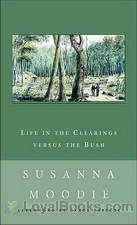 Life in the Clearings
Life in the Clearings
If you've read Margaret Atwood's Alias Grace, the historical fiction novel that describes a gruesome double murder in Canada in 1843, you would be interested to know the sources that were used by Atwood during her research. Life in the Clearings by Susanna Moodie was one such reference book in which the author, Susanna Moodie recounts her meeting with the infamous murderess Grace Marks, a young house help who was convicted to life imprisonment for her role in the slaying of her employers. Susanna Moodie was an Englishwoman born in Suffolk... | |
 Roughing It in the Bush
Roughing It in the Bush
'Roughing It In the Bush' is Susanna Moodie's account of how she coped with the harshness of life in the woods of Upper Canada, as an Englishwoman homesteading abroad. Her narrative was constructed partly as a response to the glowing falsehoods European land-agents were circulating about life in the New World. Her chronicle is frank and humorous, and was a popular sensation at the time of its publication in 1852. | |
By: Sutton Griggs (1872-1933) | |
|---|---|
 Imperium in Imperio: A Study of the Negro Race Problem
Imperium in Imperio: A Study of the Negro Race Problem
Imperium in Imperio is a historical fiction novel by Sutton Griggs, published in 1899. The novel covers the life of Belton Piedmont, an educated and disciplined black man in the Jim Crow south and his role in a shadow government of black men operated out of a college in Waco, Texas. | |
By: T. D. Bonner (1810-1883) | |
|---|---|
 Life and Adventures of James P. Beckwourth
Life and Adventures of James P. Beckwourth
Buried amid the sublime passes of the Sierra Nevada are old men, who, when children, strayed away from our crowded settlements, and, gradually moving farther and farther from civilization, have in time become domiciliated among the wild beasts and wilder savages — have lived scores of years whetting their intellects in the constant struggle for self-preservation; whose only pleasurable excitement was found in facing danger; whose only repose was to recuperate, preparatory to participating in new and thrilling adventures... | |
By: T. F. Thiselton Dyer (1848-1923) | |
|---|---|
 Strange Pages from Family Papers
Strange Pages from Family Papers
“Among other qualities which have been supposed to belong to a dead man’s hand, are its medicinal virtues, in connection with which may be mentioned the famous ‘dead hand,’ which was, in years past, kept at Bryn Hall, Lancashire… Thus the case is related of a woman who, attacked with the smallpox, had this dead hand in bed with her every night for six weeks, and of a poor lad living near Manchester who was touched with it for the cure of scrofulous sores.” Though not all chapters have such gruesome subjects as The Dead Hand, all are full of a curious mixture of superstition and local history that will delight and amuse the modern listener. | |
By: T. W. H. Crosland | |
|---|---|
 Wild Irishman
Wild Irishman
History and customs of the Irish and Ireland. A word of warning to the listener: The Wild Irishman contains the biased, uncomplimentary opinions of Englishman, Thomas Crosland. Remember this was written in the late 1800's and published in 1905. Crosland was hyper critical of Irishmen and women at a time when American cities often posted signs, "No Irish Need Apply." If you are Irish, as am I, try to not be overly offended or simply walk away. - Summary by John Brandon | |
By: Tacitus, Publius Cornelius (c. 56-117) | |
|---|---|
 The Works of Tacitus Vol. I, edited, translated, and with essays by Thomas Gordon
The Works of Tacitus Vol. I, edited, translated, and with essays by Thomas Gordon
The historical works of Tacitus are a history of the period from A.D. 14 to 96 in thirty volumes. Although many of the works were lost (only books 1-5 of the Histories and 1-6 and 11-16 of the Annals survive), enough remains to provide a good sense of Tacitus’s political and moral philosophy. Tacitus recognized the necessity for strong rulers but argued that more should be done to manage the succession of power and allow for the ascension of talent. He asserted that it was the dynastic ambitions of Rome’s many emperors that caused the decline of moral and political life and precluded the possibility of recruiting leaders of real ability... | |
By: Talbot Hughes (1869-1942) | |
|---|---|
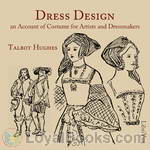 Dress Design: An Account of Costume for Artists and Dressmakers
Dress Design: An Account of Costume for Artists and Dressmakers
Explanations of Western European trends in men and women's fashion from prehistoric times to the Victorian Era. | |
By: Talbot Mundy (1879 -1940) | |
|---|---|
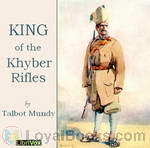 King of the Khyber Rifles
King of the Khyber Rifles
Athelstan King is a British Secret Agent stationed in India at the beginning of WWI. He is attached to the Khyber Rifles regiment as a cover, but his real job is to prevent a holy war. "To stop a holy war single-handed would be rather like stopping the wind--possibly easy enough, if one knew the way." King is ordered to work with a mysterious and powerful Eastern woman, Yasmini. Can King afford to trust her? Can he afford not to? (Introduction by Brett W. Downey) | |
By: The 9/11 Commission | |
|---|---|
 The 9/11 Commission Report
The 9/11 Commission Report
Taking the reader back to the horror and devastation of September 11, 2001, the 9/11 Commission Report by the 9/11 Commission, is the official report that presents the final findings of the committee Krean Hamilton Commission (better known as the 9/11 Commission.) The report reveals not just the events that happened on that fateful day, but also describes the circumstances that led up to it. It analyzes the role of several government agencies in the drama and also pinpoints the lacunae in the system that allowed such events to occur... | |
By: The Gawain Poet | |
|---|---|
 Sir Gawain and the Green Knight (Weston Translation Version 2)
Sir Gawain and the Green Knight (Weston Translation Version 2)
This poem celebrates Christmas by exploring the mystery of Christ's mission on earth: his death, resurrection, and second coming as judge of all human souls. Sir Gawain is cast in the role of Everyman. At the feast of the New Year, an unarmed green giant rides his green horse into the banqueting hall of King Arthur and challenges any member of the assembled company to behead him with a huge axe and then to submit to the same treatment from his victim the next year. Gawain volunteers to prevent Arthur from accepting this challenge, fairly confident that the challenger will be unfit to return the blow... | |
By: The Sisters of Notre Dame | |
|---|---|
 Leading Events in the History of the Church: Part 1 - Christian Antiquity
Leading Events in the History of the Church: Part 1 - Christian Antiquity
The first volume in a series of Catholic Church history books written for children. Volume 1 covers the time period from after Our Lord's death till the 5th Century. | |
By: The Venerable Bede (673-735) | |
|---|---|
 Ecclesiastical History of England
Ecclesiastical History of England
Bede's Ecclesiastical History of England is a work in Latin by Bede on the history of the Christian Churches in England, and of England generally; its main focus is on the conflict between Roman and Celtic Christianity. It is considered to be one of the most important original references on Anglo-Saxon history. It is believed to have been completed in 731, when Bede was approximately 59 years old. Divided into five books, it covers the history of England, ecclesiastical and political, from the time of Julius Caesar to the date of its completion (731)... | |
By: Theodor Herzl (1860-1904) | |
|---|---|
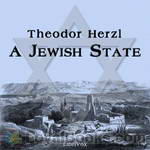 A Jewish State
A Jewish State
Read in English, this is a pivotal document in the history of Zionism and the State of Israel. Herzl designed this work to elevate the discussion of "the Jewish Question" so it would "no longer take the form of violent abuse or sentimental vindication but of a debate, practical, large, earnest, and political." While few of Herzl's proposals were actually carried out, the importance of A JEWISH STATE was in the groundswell of support for a Jewish homeland engendered by its solutions to the practical problems of establishing a new state... | |
By: Theodore Roosevelt | |
|---|---|
 Theodore Roosevelt: An Autobiography
Theodore Roosevelt: An Autobiography
In his vital, illustrative and dynamic autobiography, Theodore Roosevelt let us into the life that formed one of the greatest and outspoken presidents in American history. Not only are we privy to the formation of his political ideals, but also to his love of the frontier and the great outdoors. | |
 Through the Brazilian Wilderness
Through the Brazilian Wilderness
Roosevelt’s popular book Through the Brazilian Wilderness describes his expedition into the Brazilian jungle in 1913 as a member of the Roosevelt-Rondon Scientific Expedition co-named after its leader, Brazilian explorer Cândido Rondon. The book describes all of the scientific discovery, scenic tropical vistas and exotic flora, fauna and wild life experienced on the expedition. One goal of the expedition was to find the headwaters of the Rio da Duvida, the River of Doubt, and trace it north to the Madeira and thence to the Amazon River... | |
 The Naval War of 1812
The Naval War of 1812
Somewhat detailed history of naval engagements between the United States and England during the War of 1812, from a decidely American perspective. Completed by the author as a young man at age 24. After 120 years, it remains a standard study of the war. | |
 Strenuous Life: Essays and Addresses of Theodore Roosevelt, The
Strenuous Life: Essays and Addresses of Theodore Roosevelt, The
This book is a collection of Theodore Roosevelt’s published commentaries and public addresses on the general theme of the requirements for individual and collective success in the personal, civic, political, and social arenas. (Introduction by Bob Neufeld) | |
By: Theron Clark Crawford (1849-1925) | |
|---|---|
 American Vendetta: A Story of Barbarism in the United States
American Vendetta: A Story of Barbarism in the United States
The phrase "The Hatfields and McCoys" conjures up images of feudal warfare and Appalachian backwardness even to this day. This is a sensationalized account of the feud between the Hatfields and McCoys along the mountainous border of Kentucky and West Virginia in the late 1800s. At the height of the feud in 1888, yellow journalist T. C. Crawford interviewed Anderson "Devil Anse" Hatfield in person at his headquarters in West Virginia. Crawford's stories were serialized in a New York newspaper and later published in book form... | |
By: Thomas Babington Macaulay (1800-1859) | |
|---|---|
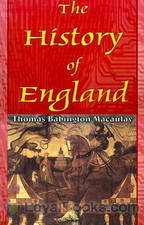 The History of England, from the Accession of James the Second
The History of England, from the Accession of James the Second
Hailed more as a literary masterpiece than an accurate account of historical facts, The History of England from the Accession of James the Second by Thomas Babington Macaulay is an admirable mix of fact and fiction. Modern day readers may find much that is offensive and insensitive in this five volume work which covers a particular period in the long and eventful history of Britain. However, it is certainly a book that leads the reader on to further research into the events and people mentioned... | |
By: Thomas Beames (1815-1864) | |
|---|---|
 Rookeries of London
Rookeries of London
Rev. Thomas Beames was a preacher at St. James, Westminster in London. He compiled his own eye-witness accounts of the most notorious of the slum areas, the Rookeries. In this essay, he passionately discusses the effects of poverty and the mistreatment of the poor and working classes. Much of what he says is still valid today; for example, in discussing over-population and emigration, he mentions the mis-use of land in Britain: "... large tracts of land, such as in Derbyshire, seem only valuable as grouse preserves... | |
By: Thomas Carlyle | |
|---|---|
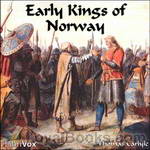 Early Kings of Norway
Early Kings of Norway
“The Icelanders, in their long winter, had a great habit of writing; and were, and still are, excellent in penmanship. It is to this fact, that any little history there is of the Norse Kings and their old tragedies, crimes and heroisms, is almost all due. The Icelanders, it seems, not only made beautiful letters on their paper or parchment, but were laudably observant and desirous of accuracy; and have left us such a collection of narratives (Sagas, literally “Says”) as, for quantity and quality, is unexampled among rude nations... | |
By: Thomas Cleland Dawson (1835-1912) | |
|---|---|
 South American Republics, Part I
South American Republics, Part I
The question most frequently asked me since I began my stay in South America has been: "Why do they have so many revolutions there?" Possibly the events recounted in the following pages may help the reader to answer this for himself. I hope that he will share my conviction that militarism has already definitely disappeared from more than half the continent and is slowly becoming less powerful in the remainder. Constitutional traditions, inherited from Spain and Portugal, implanted a tendency toward... | |
 South American Republics, Part II
South American Republics, Part II
This history begins when Pizarro and Almagro, Valdivia and Benalcazar, led their desperadoes across the Isthmus to the conquest, massacre, and enslavement of the prosperous and civilised millions who inhabited the Pacific coast of South America. It ends with the United States opening a way through that same Isthmus for the ships, the trade, the capital of all the world; with American engineers laying railroad iron on the imperial highway of the Incas; with British bondholders forgiving stricken Peru's national debt; with their debtor bravely facing the fact of bankruptcy, and turning over to them all its railways. | |
By: Thomas Conant (1842-1905) | |
|---|---|
 Upper Canada Sketches
Upper Canada Sketches
This book relates "somewhat random sketches of life in the early settlements and country districts of Upper Canada" , as well as a bit of history of the Conant family from its beginnings in England, to their emigration to what was to become Oshawa, Ontario in 1792. This book is especially interesting to the reader since it speaks a lot of the area near which she resides. - Summary by TriciaGThe Gutenberg text has the pictures referenced in the text. They're a treat to look at. | |
By: Thomas Cooper (1805-1892) | |
|---|---|
 The Bridge of History Over the Gulf of Time: A Popular View of the Historical Evidence for the Truth of Christianity
The Bridge of History Over the Gulf of Time: A Popular View of the Historical Evidence for the Truth of Christianity
Written by the former skeptic, poet, and scholar, Thomas Cooper, The Bridge of History Over the Gulf of Time admirably sets forth a winsome defense of Christianity. Written as the substance of fourteen years of lectures, at the request of his hearers, Cooper leads his reader across the bridge of history, through the centuries, tracing Christianity. At last, he addresses "Leben Jesu" by Dr. David Friedrich Strauss, discusses the historicity of the four Gospels, and offers some concluding evidences for the truth of Christianity. (Introduction by tzieger) | |
By: Thomas Davidson | |
|---|---|
 Rousseau and Education According to Nature
Rousseau and Education According to Nature
In my Volume on Aristotle in this series, I tried to give an account of ancient, classical, and social Education; in the present volume I have endeavored to set forth the nature of modern, romantic, and unsocial Education. This education originates with Rousseau. With much reluctance I have been obliged to dwell, at considerable length, on the facts of his life, in order to show that his glittering structure rests, not upon any broad and firm foundation of well-generalized and well-sifted experience, but upon the private tastes and preferences of an exceptionally capricious and self-centered nature... | |